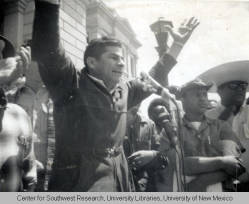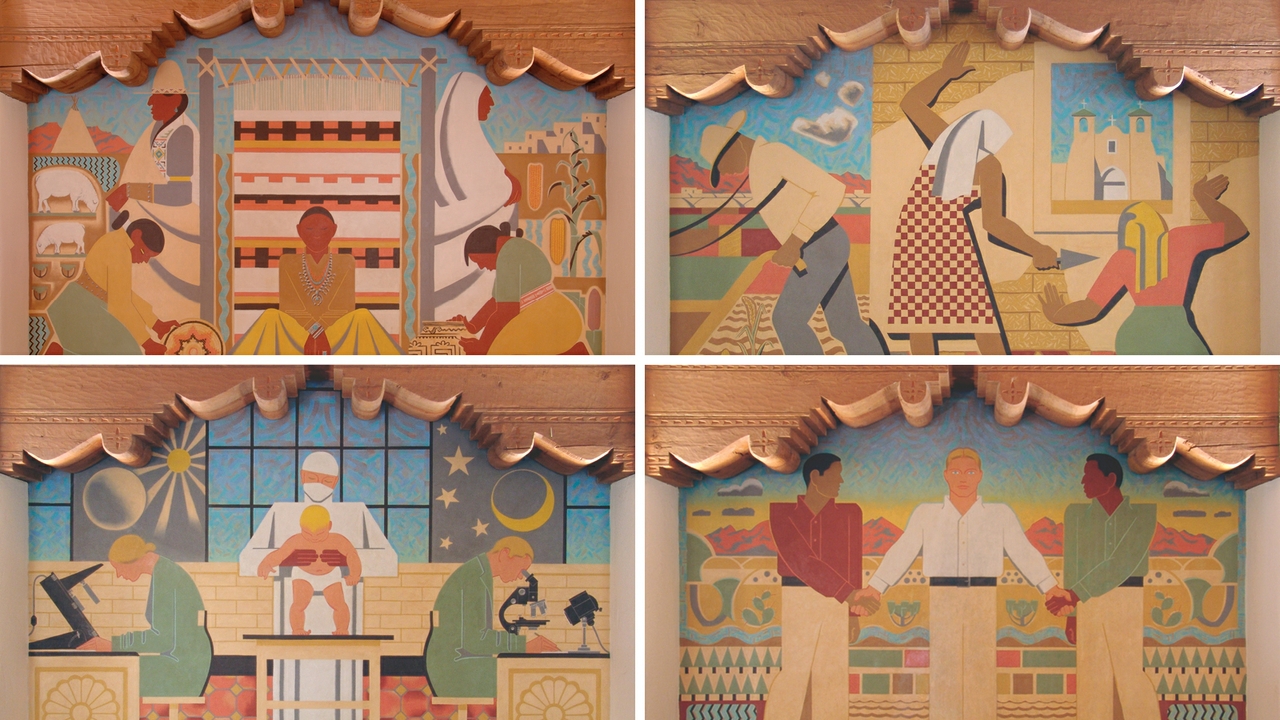Breaking Cultural Barriers in the Classroom
Education Reform in New Mexico
In the mid to late 1960's enrollment rates in New Mexican schools hit all time highs. In most schools, whites were favored over chicanos. Chicano's received the short end of the stick when it came to quality of education. Inadequate materials, facilties, and teachers were given to Chicanos and many were forced to "sink or swim". Those however, that managed to claw their way through highschool had even harder times getting into college as student tracking failed to prepare a majority of Chincano students for "higher education." New Mexico's poor education was responsible for high drop out rates of Chincao students. But at the end of the day however, those not in school were out protesting for education reform throughout New Mexico.

Protest taking action on UNM Campus
courtesy of University of New Mexico
"It was really, really great 'cause at first you were like, it's like the students are like Chicano power. It was like our selves. It's our own kind. It's the youth actually speaking out and walking, doing this for a change.
- "Miguel Lopez"
The nonstop protests for education reform in New Mexico allowed for great change to occur. Loads of new organizations started to be launched in order to help Chicanos succeed throughout highschool, and eventually in college. El Movimiento Estudiantil Chicano de Aztlan or The Chicano Student Movement of Aztlan kick started the creation of MEChA. MEChA was a Chicano founded organization created to implement Chicano culture, and studies throughout New Mexican schools. Along with providing help and support services for Chicano students.
MEChA spent alot of time focusing on helping Chicanos move into higher education. The more Chicano's present on universities like UNM, would allow for Chicanos to be equally represented. This was noted when the "three men mural" painted in 1939, took center stage at the University of New Mexico's Zimmeran library. The mural depicted a white man holding the hands of a Native American man , and Hispanic man. Many viewed the mural as racist in the sense that one race had authority over the others. The need for more Chicanos was evident as the population was not represented appropriately simply because of the lack Chicano numbers.

"The Three Peoples Murals" Courtesy of the University of New Mexico
“The murals themselves present a very racialized perspective of who is in authority, It was about the portrayal of how the racial hierarchy works in New Mexico.” - Glenabah Martinez
Effect Within Universities
With the start of these new organizations, Chicano Studies programs began to pop up in universities throughout the nation. At first, the Chicano population within universities was low. For example, in 1968, Cal State’s population was less than 4% Mexican American.
During the early stages of the Chicano Studies program at University of New Mexico, the program was very unstable and facilities were limited. Because New Mexico had and continues to have a very large Chicano population the sucess of the program relied heavily on the students.